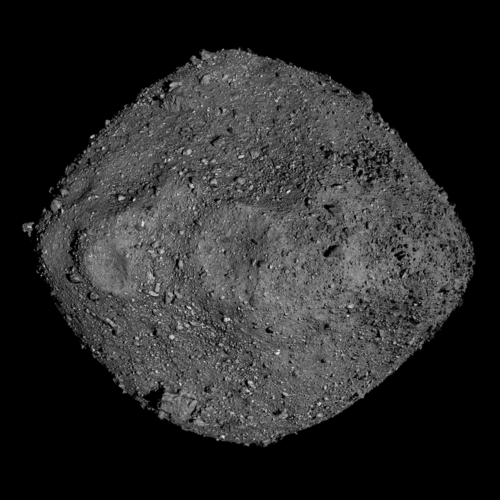
Is it possible to deflect an asteroid? It is, to a certain extent. The deflection has to happen early enough, and the asteroid has to be small enough for it to work.
Earth has been hit by countless asteroids over the eons. We are hit by over 17,000 meteors a year. Meteors are pieces of asteroids or bits of space rock. Asteroids are much larger than meteors. Earth is hit by a 1 km asteroid every 500,000 years. A 5 km asteroid every twenty million years. A 10 km or larger asteroid every hundred million years or so. Although, of course, there is no precise schedule for this. The asteroid that wiped out the dinosaurs was 15 km across. The damage that an asteroid can do isn’t just about its size. Some asteroids are made of denser rock than others and they can obviously do more damage. Then the speed they impact Earth with is also very important. A smaller, denser, asteroid travelling very fast can do far more damage than a larger, less dense asteroid travelling more slowly. The angle of impact is also important. If the angle is shallow, the asteroid might skip off the atmosphere, or a lot of its energy might be passed on. If the asteroid hits at a sharp angle, all of its kinetic energy is going into the ground. It’s like the difference between a punch glancing off your jaw and being punched square in the face. I know which of the two I would prefer. So, what can we do about it?
The dinosaurs couldn’t prevent the asteroid that destroyed them from hitting the Earth. The first they would have known about it was when it crashed in through the atmosphere. We have a few advantages over the dinosaurs here. When I say “we”, I mean scientists and astronomers because, like the dinosaurs, the first thing I would know about a giant asteroid would be when it crashed through the atmosphere.
The first step in deflecting an asteroid is knowing where they are and knowing which ones are likely to hit Earth. NASA currently tracks about 40,000 asteroids in our solar system. Most are very small, about the size of a car. The largest is 530 km across. The largest is actually called Vespa and if that hit us it would obliterate all life on Earth. NASA tracks all of these asteroids, plots their routes, and works out how close they will ever come to Earth. None of them are a danger. However, there are far more asteroids than NASA can track. There are many asteroids far out in the Kuiper belt and even in the Oort cloud. It is feasible that one of them could be knocked off course and fly in to hit Earth. If NASA saw it, what could they do?
There are two basic options. The first is to try to blow the asteroid up into pieces that are small enough to burn up in the Earth’s atmosphere. The second option is to hit the asteroid in such a way that it moves ever so slightly off course. If the asteroid is far enough away, then it only takes a small nudge to move it enough to miss Earth. Currently, nudging the asteroid seems the most likely option and there are several ways that can be done. One is with a kinetic impact. That basically means flying something like a rocket into the asteroid. If the rocket is heavy enough and has enough speed, it could knock the asteroid slightly off course. A more popular way of doing this is with a nuclear bomb. The idea would be to fly an incredibly large nuclear bomb up to the asteroid. This would be in the range of 1 gigaton. The Hiroshima bomb was 15 kilotons, so that would be 66,666 Hiroshima bombs. A preliminary mission would go up to analyze the structure of the asteroid and work out the most effective place for the blast. Once that was known, the bomb would be sent off. It would be detonated above the surface of the asteroid. The goal would not only be to destroy the asteroid. When the bomb went off, it would create massive amounts of heat that would melt the surface layer of the asteroid on one side. That surface layer would be ejected off the asteroid with explosive force. In the same way as explosive force drives a rocket forwards, the explosive force of the surface coming off the asteroid would push the asteroid in one direction. If the bomb went off in the right place, that right direction would be away from Earth. If we have enough warning, then we could deflect an asteroid. And this is what I learned today.
Sources
https://en.wikipedia.org/wiki/Asteroid_impact_avoidance
https://news.mit.edu/2020/how-deflect-asteroid-mission-0219
https://science.nasa.gov/solar-system/asteroids
https://en.wikipedia.org/wiki/Impact_event
Image By NASA/Goddard/University of Arizona – File:Bennu mosaic OSIRIS-REx.jpg from https://www.nasa.gov/press-release/nasa-spacecraft-provides-insight-into-asteroid-bennu-s-future-orbit, Public Domain, https://commons.wikimedia.org/w/index.php?curid=138720616
